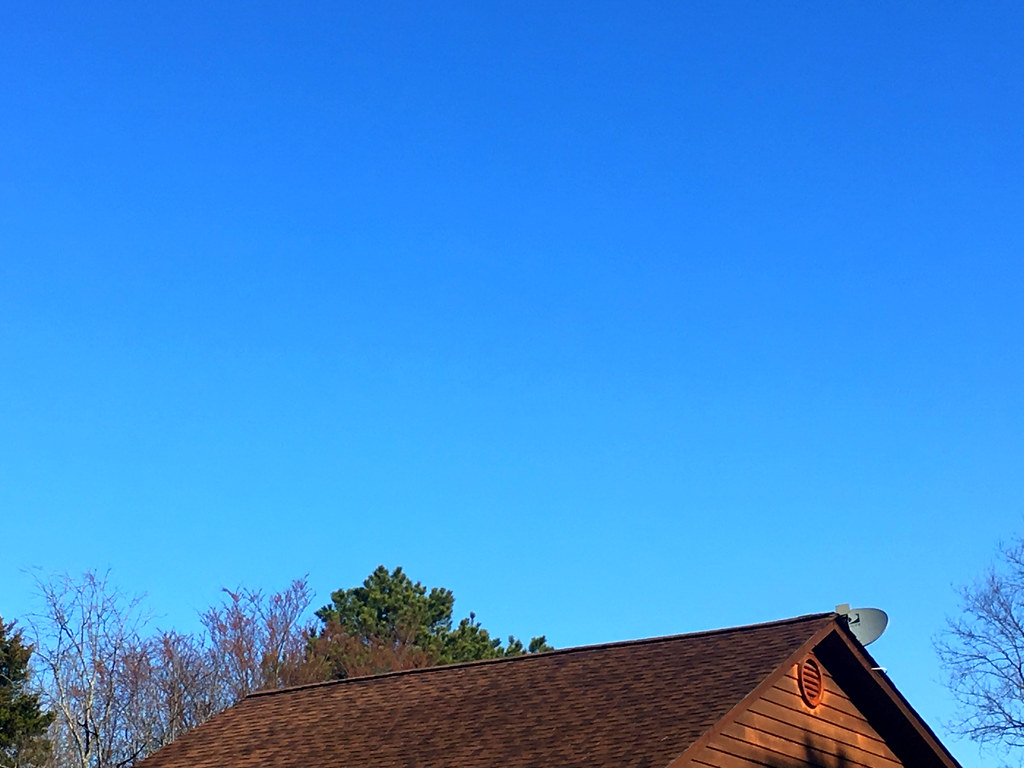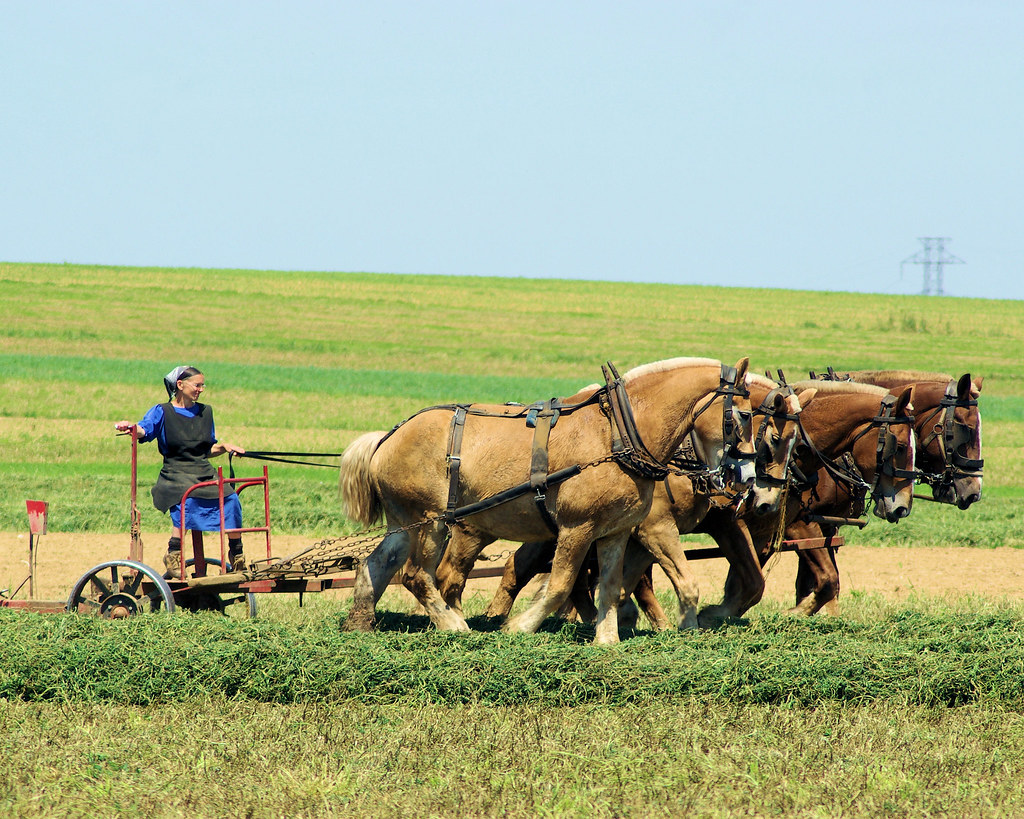Photography Now & Then #57
A second day without rain was certainly welcome – as was the clear blue sky of the morning.

Now[1]: Blue sky without clouds after extended period of clouds and rain, west-central Arkansas, February 26, 2018 (Apple iPhone 6s)
The current forecast has more rain moving in tomorrow (Tuesday) through Thursday. Rainfall amounts here may total from .5 to 1.5 inches. Higher amounts are suggest by the weather models for southern Arkansas, with some areas looking at as much as 3 to 5 inches.
______________________________________
We’ve been to the Lancaster area of Pennsylvania 3 times since our first visit in the late 1980s, when we camped in the area for several days. Twice were day trips from where we were staying. The other was when we were passing through on our way to New England in 1994. The area is widely known for the Amish who live there.

Then[2]: Raking Hay the Amish Way, Lancaster County, Pennsylvania, May 20, 2009 (Pentax K10D)
Amish3
The Amish (/ˈɑːmɪʃ/; Pennsylvania German: Amisch, German: Amische) are a group of traditionalist Christian church fellowships with Swiss Anabaptist origins. They are closely related to, but distinct from, Mennonite churches. The Amish are known for simple living, plain dress, and reluctance to adopt many conveniences of modern technology. The history of the Amish church began with a schism in Switzerland within a group of Swiss and Alsatian Anabaptists in 1693 led by Jakob Ammann. Those who followed Ammann became known as Amish.
In the early 18th century, many Amish and Mennonites immigrated to Pennsylvania for a variety of reasons. Today, the Old Order Amish, but also the New Order Amish and the Old Beachy Amish continue to speak Pennsylvania German, also known as “Pennsylvania Dutch”, although two different Alemannic dialects are used by Old Order Amish in Adams and Allen County, Indiana. As of 2000, over 165,000 Old Order Amish lived in the United States and about 1,500 lived in Canada. A 2008 study suggested their numbers had increased to 227,000, and in 2010 a study suggested their population had grown by 10 percent in the past two years to 249,000, with increasing movement to the West. Most of the Amish continue to have 6–7 children while benefitting from the major decrease in infant and maternal mortality in the 20th century. Between 1992 and 2017, the Amish population increased by 149%, while the U.S. population increased by 23%.(read more)
- Now photo is a one that is almost always taken the day of the blog post. In some instances, posts may be backdated if internet access is not available on the day of the photo or other reasons prevent posting Photography Now and Then.
- Then photo is a randomly selected older photograph from a batch of photos specifically “curated” for Photography Now and Then.
- Amish – Wikipedia
Notes:
- Each photo in this series is an “original work” – a copyright term – of Michael Goad.
- Reference links were accessed on the date the blog post was published, unless otherwise stated.
- The title convention for Photography Now & Then blog posts evolved early on from one word related to each photo separated by “&” to usually being the first word in the caption description for each photo.

